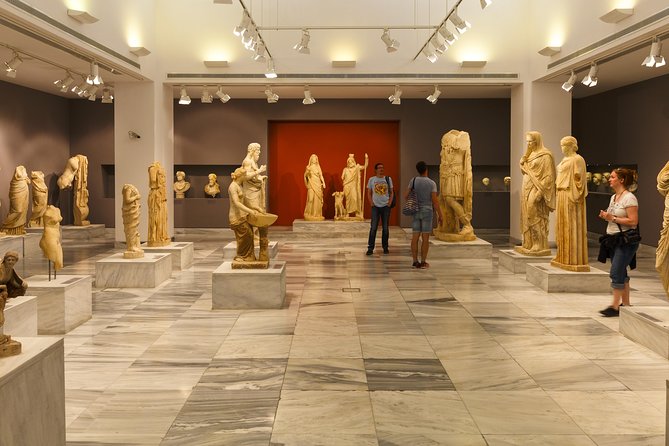
Archaeological Museum of Heraklion
The Archaeological Museum of Heraklion is located in the center of the city and is one of the most important archaeological museums in the world. It houses an unrivaled collection of artifacts from the Bronze-age Minoan culture – the first of note on what is now European soil and is one of the most important collections of history in Europe and Crete. The exhibits cover a period of ten millennia, from the Neolithic era until late Roman times.
After a major renovation and expansion, the museum has been fully open to the public since May 2014, with 24 rooms of exhibits on display. A standard tour would start on the Ground floor, the halls are dedicated to the Neolithic and Minoan cultures. Organized chronologically, covering all phases of the Minoan civilization, the rooms direct you from the Prepalatial period (3000 – 1900 BC), through three phases of Palaces, down to the Post-palatial era (1350 – 1000 BC).
The information displays in each room explain the key features of each period – and so the evolution of culture. In these halls, the visitor is held entranced by objects of Minoan art and craft, jewelry and seals, pottery and metalwork, ivory, faience and glass. There are everyday items, as well as those used for religious ceremonies and worship rituals; we also find a great number of items from burial chambers. Interested visitors can read the displays for additional information on the economic, religious and social practices of the time. Among the exhibits are some of the most famous Minoan icons, such as the Snake Goddess, the Phaistos Disk, the Ring of Minos and the Mallia wasp (or bee) pendant.
Visitors to the museum can admire unique artifacts recovered from the excavations at the Palaces of Knossos, Phaistos, Agia Triada, Malia and Zakros – as well as the numerous other major centers and sites of Minoan Crete. Past the first floor galleries, the hall is lined with stunning Minoan frescoes. Here we see the Prince of the Lilies, the Ladies in Blue, the Saffron Gatherer and other well-known frescoes. In the adjoining rooms, we find artifacts from the Subminoan and Early Iron Age periods (Proto- and Geometric) and Archaic times, which also come from the island of Crete. Many of these are exhibited for the first time. The collection of the first floor is completed with exhibits of the Classical and Hellenistic years.
Returning to the Ground floor, do visit the hall lined with sculptures ranging from the Archaic, through to the Classical and down to the Roman period. The original museum building was constructed between 1937 and 1940, designed by architect Patroklos Karantinou, and refurbished in the post-war years. The most recent make-over greatly increased the floor-space available, delivering a museum, worthy of the 21st century.
The site itself was of significance as it was here during the Venetian era that the important Roman Catholic monastery of St. Francis was located.
Notable Venetian families were buried in the cemetery, as well as all those that perished during the 21-year long Ottoman siege. The monastery itself was destroyed by an earthquake in 1856.
Read more about the Archaeological Museum of Heraklion
Address: Xanthoudidou & Hadjidaki Street
Visiting hours/info:
Tuesday-Saturday: 08:00-19:00,
Monday & Sunday & Holidays: 09:00-16:00
Tel: (+30) 2810279000, (+30)2810279086, (+30)2810279087
Fax: (+30)2810279071
Email: [email protected]
*Opening hours and information subject to change.